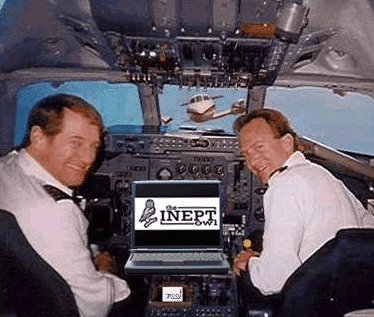 One of the things I am thankful for in life (among many) is safe air travel. A lot of time, effort and money is spent to ensure flight crews develop and maintain strong situational awareness. The chances of getting killed in a commercial airline accident while traveling with one of the top 20 carriers is 1:87 million. That gives me comfort. But it also causes me, as a researcher and practitioner of first responder safety, to contemplate how the airlines have been able to create such an impeccable safety record. From that inquiry has come many lessons that I now share with first responders. One of those is the process of a facilitated debrief. Here’s how it works:
One of the things I am thankful for in life (among many) is safe air travel. A lot of time, effort and money is spent to ensure flight crews develop and maintain strong situational awareness. The chances of getting killed in a commercial airline accident while traveling with one of the top 20 carriers is 1:87 million. That gives me comfort. But it also causes me, as a researcher and practitioner of first responder safety, to contemplate how the airlines have been able to create such an impeccable safety record. From that inquiry has come many lessons that I now share with first responders. One of those is the process of a facilitated debrief. Here’s how it works:
A facilitated debrief is a very productive way to glean the lessons of a casualty or near-miss event and create a plan for self-improvement. [tweet this] The airlines have been using facilitated debriefs for years to improve aviation safety.
The debrief process is very different from OSHA or NIOSH investigations. The questions are different, the motives are different and the outcomes are very different. For both OSHA and NIOSH, the investigation process uses a scripted set of questions and the reports are a structured assessment of the organization based on the motives of the agency.
In a facilitated debrief the facilitator is not restricted by the rules of any federal agency to guide the inquiry. No questions or areas of the operations are off-limits and the process often uncovers many, many opportunities for self-reflection and self-improvement that would never, otherwise, have been identified.
The debrief should be conducted by public safety practitioners from outside the department who are familiar with best practices. The facilitators should possess little interest in citing chapters and versus from laws or national standards that may be devoid of real applicability to the department. OSHA and NIOSH will do enough of that. The recommendations are very organization-specific and seek to identify root causes for the incident and offers tangible solutions.
Topical areas addressed in a facilitated debrief might, for example, address (in detail): communications, teamwork, decision making, dispatch, accountability, command, training, physical fitness, SOPs/SOGs and others.
One of the best features about a facilitated debrief is the organization’s administration and members can take comfort in knowing the debriefers are not investigators and the lessons are being captured for the sake of improvement, not punishment, fines or to create a list of mistakes that should not have been done.
There’s no judgment in the facilitated debrief process. The facilitators are there to learn from the members who were “boots on the ground” at the incident; to obtain an intense understanding of the how and why; and, to give immediately usable advice that will improve safety.
The facilitated debrief report is issued to the department to do with as they please. It’s not published and subjected to the scrutiny of others (unless, of course, the department wishes to share their lessons)… and many do.
The facilitated debrief… the second best way to improve safety. [tweet this] The first best way… will be shared in the next post. Two Key Ways to Improve Learning and Recall!
_____________________________________________________________
The mission of Situational Awareness Matters is simple: Help first responders see the bad things coming… in time to change the outcome.
Safety begins with SA!
_____________________________________________________________
Share your comments on this article in the “Leave a Reply” box below. If you want to send me incident pictures, videos or have an idea you’d like me to research and write about, contact me. I really enjoy getting feedback and supportive messages from fellow first responders. It gives me the energy to work harder for you.
Thanks,
Email: Support@RichGasaway.com
Phone: 612-548-4424
Facebook Fan Page: www.facebook.com/SAMatters
Twitter: @SAMatters
LinkedIn: Rich Gasaway
YouTube: SAMattersTV
iTunes: SAMatters Radio


“The facilitated debrief” It is completely new topic for me, gain a lot of information on the topic, Thank you for sharing valuable information